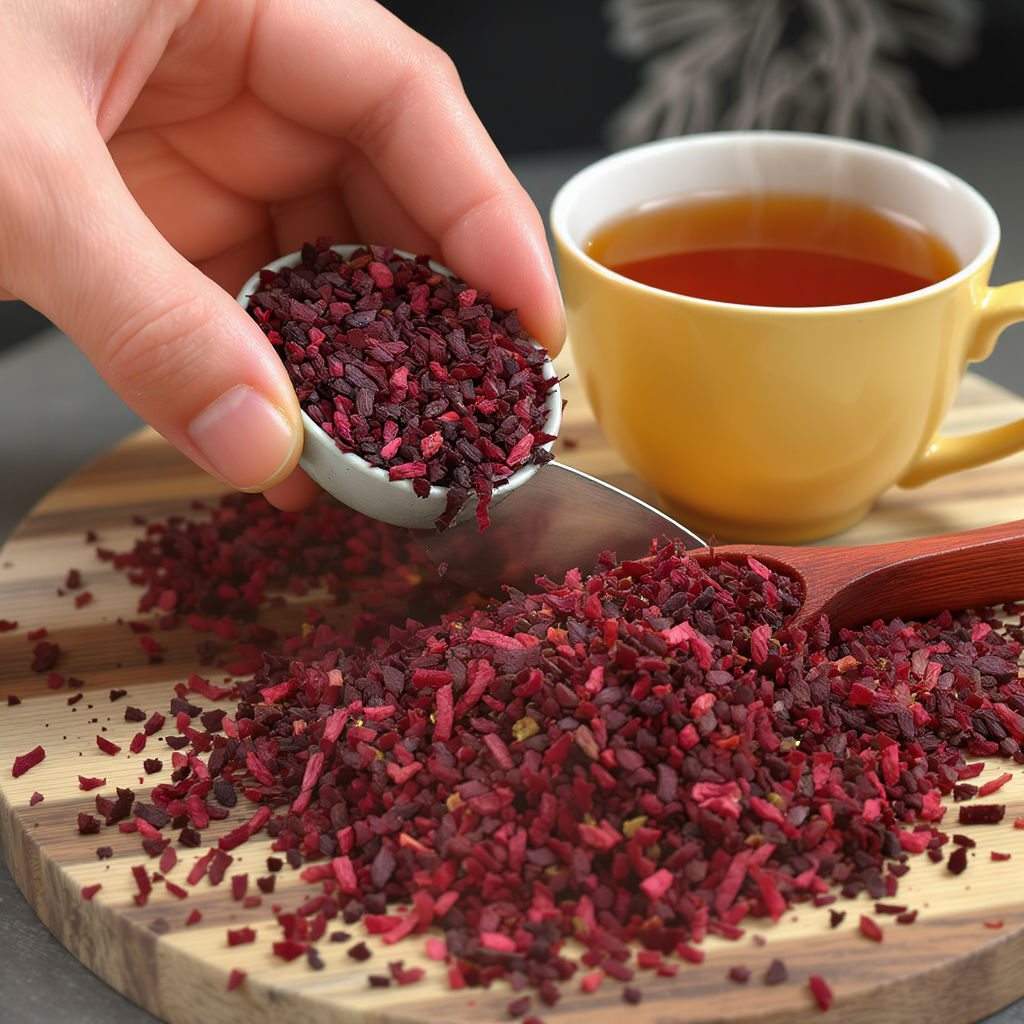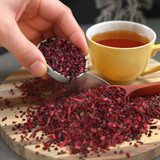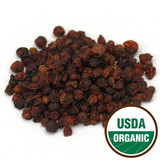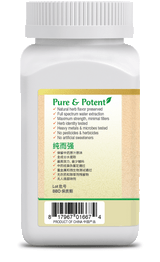Schisandra Berries (Wu Wei Zi): The Five-Flavor Berry That Harmonizes the Body — From Ancient TCM Texts to Modern Herbal Science
By 1st Chinese Herbs — Trusted, Lab-Tested Herbs Since 1994
Schisandra (Wu Wei Zi) is a five-flavor berry traditionally used in Chinese herbalism to support balance, vitality, and overall resilience. In TCM, it influences the Liver, Lung, Heart, and Kidney systems, and has been valued for generations for its grounding, harmonizing nature and its role in classical tonic formulas.
Some herbs are known for one thing.
A single taste. A single use. A single purpose.
Schisandra is the opposite.
Known as Wu Wei Zi — “The Five-Flavor Berry” — it is one of the most complex, multifaceted, and historically respected herbs in Traditional Chinese Medicine (TCM).
Its flavor alone communicates its power:
sour, sweet, salty, bitter, and pungent — all at once.
To TCM scholars, this meant only one thing:
Schisandra influences every major organ system and has the rare ability to stabilize, preserve, harmonize, and balance.
Across dynasties, Daoist practitioners used it in formulas for clarity, endurance, focus, and adaptability.
Modern herbalism continues to explore these traditional uses, viewing Schisandra as an herb valued for supporting resilience, vitality, and general well-being.
What Makes Schisandra Unique? (TCM Perspective & Classical Theory)
⭐ 1. The Five Flavors = Five Directions of Action
In classical herbal theory, flavor determines function.
Schisandra contains all five, giving it rare multi-directional influence:
-
Sour: astringes and preserves
-
Sweet: harmonizes
-
Salty: softens and moves inward
-
Bitter: clears
-
Pungent: circulates qi
This is why Wu Wei Zi appears in tonics for grounding, balance, and long-term vitality.
⭐ 2. Meridians Influenced
Schisandra enters:
-
Heart (Shen, emotional balance)
-
Lung (qi, breath, stability)
-
Kidney (essence, stamina, core vitality)
A rare tri-system influence.
⭐ 3. Strengthening & Stabilizing Essence (Jing)
The ancient text Shen Nong Ben Cao Jing (神农本草经) named Schisandra a Superior Class Herb — meaning herbs intended for long-term use to support vitality and resilience.
It was associated with:
-
grounded energy
-
long-term stamina
-
clarity
-
adaptability
⭐ 4. Harmonizing the Liver System
TCM traditionally uses Schisandra to:
-
smooth Liver qi
-
support emotional harmony
-
promote clarity and focus
Its sour flavor anchors and stabilizes the Liver, especially during times of stress or change.
⭐ 5. Supporting Lung Qi
Because Schisandra is astringing, it:
-
helps “contain” Lung qi
-
is used in tonics where preservation and stabilization are desired
This pairing of stability + nourishment is why Wu Wei Zi has been revered for centuries.
Modern Scientific Interest
Contemporary herbal researchers highlight Schisandra for its:
-
unique lignans
-
antioxidant constituents
-
adaptogenic role in traditional formulations
-
traditional use in endurance and clarity formulas
-
historic role in vitality and resilience tonics
Studies continue to explore these traditional applications.
How to Use Schisandra (Traditional & Modern Methods)
 1. Tea (Bright, Tart, Five-Flavor Brew)
1. Tea (Bright, Tart, Five-Flavor Brew)
-
1–2 teaspoons dried berries
-
Simmer 10–15 minutes
-
Strain
-
Sip warm
When to Choose:
Perfect for daily clarity and grounding.
2. Decoction (Classical, Deep Extraction)
-
1–2 tablespoons berries
-
Simmer 30 minutes
-
Drink 1–2 cups/day
When to Choose:
For those following classical tonic protocols.
3. Powder
-
¼–½ teaspoon in warm water or smoothies
When to Choose:
For convenience + full berry flavor.
4. Extract Powder (5:1 or 10:1)
-
⅛–¼ teaspoon
-
1–2× per day
When to Choose:
For concentrated support.
5. Tincture
Use according to label instructions.
Which Form Should I Choose? (Comparison Table)
| Form | Traditional Use | Flavor Strength | Best For | Ease |
|---|---|---|---|---|
| Whole Berries | Tea, decoctions | Strong | TCM-style use | Easy |
| Powder | Drinks, tonics | Very strong | Daily mixes | Very easy |
| Extract (5:1–10:1) | Concentrated tonics | Mild | Busy schedules | Easiest |
| Tincture | On-the-go use | Tart | Fast use | Fastest |
Schisandra in Classical Combinations (TCM Synergy)
⭐ 1. With Dang Shen (Codonopsis)
Traditional combination for daily vitality and grounding.
⭐ 2. With Goji Berries (Gou Qi Zi)
Balances nourishment and clarity.
⭐ 3. With Licorice Root (Gan Cao)
Harmonizes and rounds out flavor.
⭐ 4. With Astragalus (Huang Qi)
Used in endurance and resilience formulas.
⭐ 5. With Rehmannia (Shu Di Huang)
Appears in tonics for grounding and essence nourishment.
Historical & Cultural Notes
-
Used by Daoist practitioners in longevity and meditation formulas
-
Listed in ancient materia medicas for emotional stability and clarity
-
Used in both Northern Chinese and Korean tonic traditions
-
Valued in Russia for resilience and endurance tonics
-
Known as a “scholar’s berry” for promoting clarity and steadiness
This depth of use contributes to Schisandra’s enduring popularity.
Seasonal Uses
Spring:
Paired with Liver-soothing herbs for emotional harmony.
Summer:
Used in cooling drinks with goji and chrysanthemum.
Fall:
Used for grounding and stability as the season shifts.
Winter:
Added to tonics and decoctions for vitality and warmth.
This transforms the article into year-round evergreen content.
Schisandra vs Other Popular Herbs
| Herb | How It Differs from Schisandra | Best Use |
|---|---|---|
| Goji Berry | More moistening and nourishing | Daily wellness |
| Elderberry | Historically used seasonally | Seasonal support |
| Ginseng | More qi-tonifying | Vitality & stamina |
| Hawthorn Berry | More digestive | Post-meal comfort |
Beginner → Intermediate → Advanced Use Path
Beginner:
Simple five-flavor tea (1 tsp simmered 10 minutes)
Intermediate:
Tea + goji + licorice blend
Advanced:
Classical tonic decoction with codonopsis + astragalus + Schisandra
This keeps readers returning as they grow in herbal skill.
❓ Frequently Asked Questions
1. What does Schisandra taste like?
Tart, pungent, sweet, salty, and slightly bitter — all five flavors at once.
2. Is Schisandra warming or cooling?
In TCM, it is slightly warming.
3. Can I take Schisandra daily?
Traditional practices support long-term use.
4. How do you brew Schisandra correctly?
Simmer gently; avoid boiling too hard to preserve aromatics.
5. What herbs pair best with Schisandra?
Ginseng, goji, astragalus, licorice, and rehmannia.
Shop This Herb
See all forms of Schisandra Berries Below
-
Shop Schisandra Berries →
-
Shop Schisandra Powder →
-
Shop Schisandra Extract Powder →
Author
Written by Sarah Johnson, M.S. Holistic Healing
1st Chinese Herbs — Trusted Since 1994

Product Description
Common Name: Schisandra Fruit, Schisandra Berries, Fructus Schisandrae Chinensis, Five Flavored Seed, Jujube Fruit, Magnolia Vine
Botanical Name: Schisandra chinensis fruit
Pin Yin Name: Wu Wei Zi
Other Ingredients: None, nothing has been added to this product.
Package Size: One Pound (1lb)
Form: Organic Teacut form
Origin: China
Brand: nuherbs
Cautions: Do not use if pregnant or nursing. Do not use if excessive heat is present.
California Prop 65
Additional Information About Schisandra Fruit
Whole berries are commonly made into a decoction or a tincture. If you want to be adventurous, add a few to your chicken soup as they make a tasty addition to the flavor.
Product Properties: Sour, Warm
Channels/Meridians: Heart, Kidney, Lung
Benefits of Schisandra Fruit
- Liver Support
- Tonic
- Cardiovascular Health
- Relaxant
- Sedative
About Nuherbs Lab Tested Quality.
Each batch of herbs is dual-lab tested by our in-house lab and independent third party lab. Our in-house lab is equipped with instruments such as a high performance liquid chromatography, a moisture determination meter, Fourier transform infrared spectrometer, atomic absorption spectrophotometer, gas chromatograph, etc.
In addition, the following additional tests are performed:
- Micro bacteria
- Pesticides - over 200 pesticides tested for (Uab 2000 screen).
- Heavy Metals - Lead, Mercury and Arsenic
Traditional Chinese Herbs encompasses the use of different parts of plants, such as the leaves, roots, stems, flowers, and seeds. These plant parts are often used as a tea, decoctions, extracts, made into capsules or even a footbath. These bulk herbs should be regarded as an added feature to modern western healthcare, and not as a replacement. Chinese traditional herbs ( Teas ) emphasize harmony and balance.
We encourage you to educate yourself on herbs and supplements, by researching reputable sites, and books. Having an open discussion with your physician on what will be most beneficial for your health issues. And lastly discussing interaction of herbs and pharmaceuticals with your pharmacist or physician.
References
-
Antioxidant Effects of Schisandra chinensis Fruits and Their Active Constituents (Kopustinskiene et al., 2021) — Review of S. chinensis fruit extracts, their lignans and antioxidant/mitoprotective effects. PubMed
-
A Comprehensive Review of the Main Lignan Components of Schisandra chinensis … (Zhang et al., 2022) — Detailed review of the lignan components, their pharmacokinetics, and potential for drug-interaction. PubMed+1
-
Potential of Schisandra chinensis in Human Health and Nutrition: A Review of Current Knowledge (Nowak et al., 2019) — Explores many traditional uses and modern research potentials. PubMed
-
Effect of Schisandra chinensis Extract Supplementation on Quadriceps Muscle Strength and Fatigue in Adult Women: A Randomized, Double‑Blind, Placebo‑Controlled Trial (Park et al., 2020) — Human clinical trial showing effects on muscle strength & fatigue. PubMed
-
Schisandra chinensis Fruit Modulates the Gut Microbiota and Alleviates Obesity in High‑Fat Diet Rats (Song et al., 2015) — Animal study linking S. chinensis to gut microbiota modulation. PubMed
✅ How to Use These in Your Article
-
In the Modern Research section mention:
“A 2021 review found that S. chinensis fruit extracts are potent antioxidants and mitoprotectors via their lignan compounds.” PubMed
-
In your Modern Science sub-heading you can add:
“Clinical trial data (2020) found that a 12-week supplementation of S. chinensis extract improved quadriceps muscle strength and reduced resting lactate levels in adult women.” PubMed
-
Use the drug-interaction article to add a “Considerations & Safety” point:
“Some lignans from S. chinensis have shown effects on enzyme systems (CYP450) and P-glycoprotein activity, which may influence drug–herb interactions.” PubMed+1


















